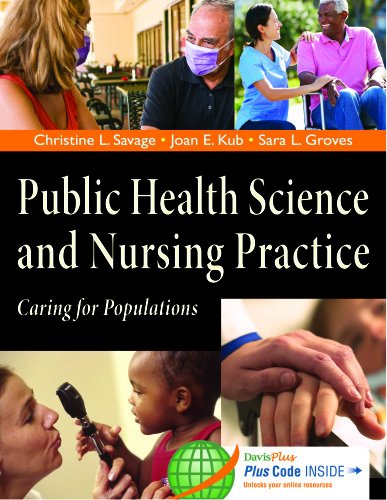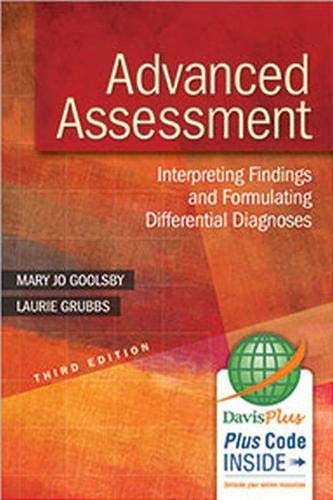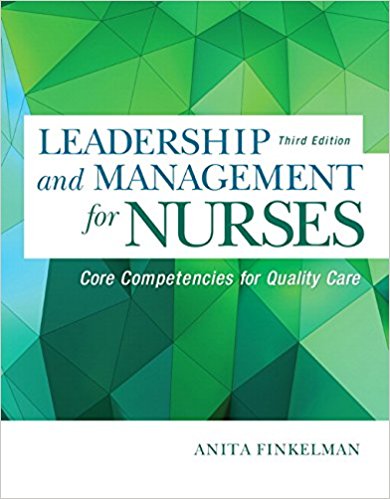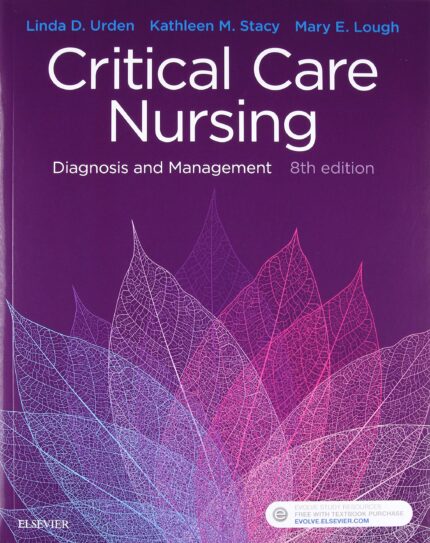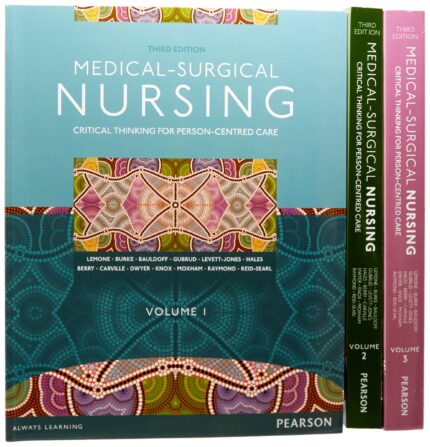Test Bank for Public Health Science and Nursing Practice Caring For Populations by Savage
Chapter 10: Mental Health
MULTIPLE RESPONSE
1.According to Healthy People 2020, which of the following are characteristics of mental health?
Select all that apply.
| A. | Engaging in productive activities |
| B. | Having fulfilling relationships |
| C. | Experiencing alterations in thinking |
| D. | Adapting to change |
| E. | Coping with challenges |
ANS: A, B, D, E
Objective: 3. Define the difference between behavioral, biological, environmental, and socioeconomic risk factors related to mental health disorders.
pp. 225-226
Heading: Introduction
Integrated Processes: N/A
Client Need: Psychosocial Integrity
Cognitive Level: Knowledge [Remembering]
Concept: Promoting Health
Difficulty: Moderate
| Feedback | |
| 1. | Mental health is a state of successful performance of mental function, including engagement in productive activities. |
| 2. | Mental health is a state of successful performance of mental function, including being able to form fulfilling relationships with other people. |
| 3. | This is incorrect; it is an example of a mental disorder. Mental disorders are health conditions that are characterized by alterations in thinking, mood, or behavior that are associated with distress or impaired functioning. |
| 4. | Mental health is a state of successful performance of mental function, including the ability to adapt to change. |
| 5. | Mental health is a state of successful performance of mental function, including the ability to cope with challenges. |
PTS:1CON:Promoting Health
MULTIPLE CHOICE
2.In 2010, approximately how many people in the United States reported experiencing mental disorders in the previous year?
| A. | 15% |
| B. | 50% |
| C. | 30% |
| D. | 25% |
ANS: D
Objective: 1. Define the burden of disease related to mental disorders using current epidemiological frameworks.
pp. 226-227
Heading: Epidemiology of Mental Disorders
Integrated Processes: N/A
Client Need: Psychosocial Integrity
Cognitive Level: Comprehension [Understanding]
Concept: Promoting Health
Difficulty: Moderate
| Feedback | |
| A | This is incorrect. In the United States in 2010 an estimated 25% of adults reported having mental disorders in the previous year. |
| B | This is incorrect. In the United States in 2010 an estimated 25% of adults reported having mental disorders in the previous year. |
| C | This is incorrect. In the United States in 2010 an estimated 25% of adults reported having mental disorders in the previous year. |
| D | In the United States in 2010 an estimated 25% of adults reported having mental disorders in the previous year. |
PTS:1CON:Promoting Health
3.A student nurse is studying stress and mental health. The student nurse learns that ____ is based on an individual’s ability to access protective factors that exist at different levels in order to withstand chronic stress or recover from traumatic life events.
| A. | Intervention |
| B. | Support |
| C. | Resilience |
| D. | Therapy |
ANS: C
Objective: 3. Define the difference between behavioral, biological, environmental, and socioeconomic risk factors related to mental health disorders.
pp. 229-231
Heading: Protective Factors: Building Resilience
Integrated Processes: Teaching/Learning
Client Need: Psychosocial Integrity
Cognitive Level: Application [Applying]
Concept: Trauma; Stress; Promoting Health; Nursing Roles
Difficulty: Moderate
| Feedback | |
| A | This is incorrect. Resilience is based on an individual’s ability to access protective factors that exist at different levels in order to withstand chronic stress or recover from traumatic life events. Preventive and treatment interventions are useful tools to build on an individual’s natural resilience to promote positive outcomes. |
| B | This is incorrect. Resilience is based on an individual’s ability to access protective factors that exist at different levels in order to withstand chronic stress or recover from traumatic life events. Support from family, friends, and community is an important part of strengthening an individual’s resilience. |
| C | Resilience is based on an individual’s ability to access protective factors that exist at different levels in order to withstand chronic stress or recover from traumatic life events. |
| D | This is incorrect. Resilience is based on an individual’s ability to access protective factors that exist at different levels in order to withstand chronic stress or recover from traumatic life events. Therapy is an important part of an overall treatment plan, in conjunction with intervention, support, and an individual’s capacity for resilience. |
PTS: 1 CON: Trauma | Stress | Promoting Health | Nursing Roles
4.____ addresses specific subgroups at highest risk for development of a mental disorder or those that are showing early signs of a mental disorder.
| A. | Indicated prevention |
| B. | Selective prevention |
| C. | Universal prevention |
| D. | Both 1 and 2 |
ANS: A
Objective: 4. Apply current evidence-based population level interventions to the prevention of mental disorders and the promotion of optimal mental health for communities and populations.
pp. 232-233
Heading: Prevention of Mental Disorders and Promotion of Mental Health > Institute of Medicine Model of Prevention
Integrated Processes: Nursing Process
Client Need: Psychosocial Integrity
Cognitive Level: Comprehension [Understanding]
Concept: Promoting Health
Difficulty: Moderate
| Feedback | |
| A | Indicated prevention addresses specific subgroups at highest risk for development of a mental disorder or those that are showing early signs of a mental disorder. The purpose of indicated techniques is to delay or reduce the severity of a mental disorder. |
| B | Selective prevention includes interventions provided to specific subgroups that are known to be at high risk for mental disorders owing to biological, psychological, social, or environmental factors but that have not yet been diagnosed with mental disorders. High-risk subgroups include but are not limited to those with a family history of mental disorders, history of adverse childhood events, or victims of violence. |
| C | Universal prevention refers to prevention interventions provided to the entire population, not just those who may be at risk. The interventions include but are not limited to public service announcements provided to the public at large through billboards, media messages (print and electronic), or general health education programs. |
| D | Indicated prevention addresses specific subgroups at highest risk for development of a mental disorder or those that are showing early signs of a mental disorder. The purpose of indicated techniques is to delay or reduce the severity of a mental disorder. Selective prevention includes interventions provided to specific subgroups that are known to be at high risk for mental disorders owing to biological, psychological, social, or environmental factors but that have not yet been diagnosed with mental disorders. High-risk subgroups include but are not limited to those with a family history of mental disorders, history of adverse childhood events, or victims of violence. |
PTS:1CON:Promoting Health
5.The public health nurse (PHN) recognizes that which of the following are used as screening tools for depression?
| A. | Patient Health Questionnaire 2 |
| B. | Center for Epidemiological Studies Depression Scale (CESD-10) |
| C. | Brief Symptom Checklist-18 of the My Mood Monitor (M-3) |
| D. | Both 1 and 2 |
ANS: D
Objective: 5. Describe systems approaches to the promotion of mental health and the prevention and treatment of mental health disorders.
p. 232
Heading: Prevention of Mental Disorders and Promotion of Mental Health > Measure of Mental Health: Health-Related Quality of Life
Integrated Processes: Nursing Process
Client Need: Psychosocial Integrity
Cognitive Level: Application [Applying]
Concept: Promoting Health; Mood; Assessment
Difficulty: Moderate
| Feedback | |
| A | Tools to screen for depression include the Patient Health Questionnaire 2 and the CESD-10. |
| B | Tools to screen for depression include the Patient Health Questionnaire 2 and the CESD-10. |
| C | This is incorrect. Tools to screen for depression include the Patient Health Questionnaire 2 and the CESD-10. Screening tools for anxiety disorders include the Brief Symptom Checklist-18 of the My Mood Monitor (M-3). |
| D | Tools to screen for depression include the Patient Health Questionnaire 2 and the CESD-10. |
PTS:1CON:Promoting Health | Mood | Assessment
6.During a course on mental disorders, a PHN learns that the term serious mental illness (SMI) refers to diagnosable mental disorders that may disrupt a person’s ability to function and may qualify that person for support services. The PHN also notes that the mental disorders that can lead to SMI include:
| A. | Mild depression |
| B. | Panic disorder |
| C. | Schizophrenia |
| D. | Both 2 and 3 |
ANS: D
Objective: 1. Define the burden of disease related to mental disorders using current epidemiological frameworks.
pp. 225-226
Heading: Introduction
Integrated Processes: Teaching/Learning
Client Need: Psychosocial Integrity
Cognitive Level: Application [Applying]
Concept: Cognition; Mood; Stress; Promoting Health; Nursing Roles
Difficulty: Moderate
| Feedback | |
| A | This is incorrect. Major depression, however, is one of the mental disorders that can lead to SMI. |
| B | Both panic disorder and schizophrenia, among other mental disorders, can lead to SMI. |
| C | Both schizophrenia and panic disorder, among other mental disorders, can lead to SMI. |
| D | The mental disorders that can lead to SMI include major depression, panic disorder, schizophrenia, bipolar disorder, obsessive compulsive disorder (OCD), post-traumatic stress disorder (PTSD), and borderline personality disorder. |
PTS: 1 CON: Cognition | Mood | Stress | Promoting Health | Nursing Roles
7.While studying the prevalence of mental health disorders worldwide, a PHN learns about the World Mental Health Survey, which is used to determine estimates of human capital costs and prevalence of mental disorders in a wide range of countries. The survey was developed by
| A. | The Centers for Disease Control and Prevention (CDC) |
| B. | The World Health Organization (WHO) |
| C. | The Institute of Medicine (IOM) |
| D. | The World Health Assembly |
ANS: B
Objective: 1. Define the burden of disease related to mental disorders using current epidemiological frameworks.
p. 227
Heading: Epidemiology of Mental Disorders > Surveillance of Mental Health Disorders
Integrated Processes: Teaching/Learning
Client Need: Psychosocial Integrity
Cognitive Level: Application [Applying]
Concept: Promoting Health; Nursing Roles
Difficulty: Moderate
| Feedback | |
| A | This is incorrect. WHO developed the World Mental Health Survey to estimate human capital costs and mental disorders prevalence on a global scale. The CDC conducts many types of surveys on the prevalence of mental disorders but the organization did not develop the World Mental Health Survey. |
| B | The WHO developed the World Mental Health Survey to estimate human capital costs and mental disorders prevalence on a global scale. |
| C | This is incorrect. WHO developed the World Mental Health Survey to estimate human capital costs and mental disorders prevalence on a global scale. The IOM is involved in screening for mental health disorders and addresses the need for appropriate behavioral health treatment in its report, Improving the Quality of Health Care for Mental and Substance-Use Conditions: Quality Chasm Series. |
| D | This is incorrect. WHO developed the World Mental Health Survey to estimate human capital costs and mental disorders prevalence on a global scale. The World Health Assembly issued a resolution on mental health that aims to reduce the global burden of mental disorders and improve overall mental health worldwide. |
PTS: 1 CON: Promoting Health | Nursing Roles
8.Which ethnic group has the highest 12-month prevalence of a mental disorder?
| A. | Hispanics |
| B. | African Americans |
| C. | Asian Americans |
| D. | Non-Hispanic whites |
ANS: D
Objective: 1. Define the burden of disease related to mental disorders using current epidemiological frameworks.
pp. 227-228
Heading: Epidemiology of Mental Disorders > Prevalence of Mental Health Disorders
Integrated Processes: N/A
Client Need: Psychosocial Integrity
Cognitive Level: Knowledge [Remembering]
Concept: Promoting Health
Difficulty: Moderate
| Feedback | |
| A | This is incorrect. Non-Hispanic whites have the highest 12-month prevalence rate for mental disorders at 21% compared with 16% for Hispanics. |
| B | This is incorrect. Non-Hispanic whites have the highest 12-month prevalence rate for mental disorders at 21% compared with 15% for African Americans. |
| C | This is incorrect. Non-Hispanic whites have the highest 12-month prevalence rate for mental disorders at 21% compared with 9% for Asian Americans. |
| D | Non-Hispanic whites have the highest 12-month prevalence rate for mental disorders at 21%. |
PTS:1CON:Promoting Health
9.A PHN learns in a behavioral health class that the relationship between physiology and mental health plays an important role in mental disorders. Which of the following physiological factors may contribute to the development of mental disorders?
| A. | Conditions that affect brain chemistry, such as medication side effects or toxins |
| B. | Physical trauma |
| C. | 1 and 2 |
| D. | Unstable family life |
ANS: C
Objective: 3. Define the difference between behavioral, biological, environmental, and socioeconomic risk factors related to mental health disorders.
pp. 228-229
Heading: Behavioral, Biological, Environmental, and Socioeconomic Risk Factors > Individual Level Risk Factors for Mental Disorders
Integrated Processes: Teaching/Learning
Client Need: Psychosocial Integrity
Cognitive Level: Application [Application]
Concept: Cognition; Trauma; Promoting Health
Difficulty: Moderate
| Feedback | |
| A | Both conditions that affect brain chemistry and physical trauma are the physiological factors that may contribute to the development of mental disorders. |
| B | Both physical trauma and conditions that affect brain chemistry are physiological factors that may contribute to the development of mental disorders. |
| C | Conditions that affect brain chemistry and physical trauma are two of the physiological factors that may contribute to the development of mental disorders. |
| D | This is incorrect. Conditions that affect brain chemistry and physical trauma are two of the physiological factors that may contribute to the development of mental disorders. An unstable family life is not a physiological factor, although it may also contribute to the development of mental disorders. |
PTS:1CON:Cognition | Trauma | Promoting Health
10.Which of the following community environment factors play a role in the development of mental disorders?
| A. | Living in high crime areas |
| B. | Poverty |
| C. | Both 1 and 2 |
| D. | Family instability |
ANS: C
Objective: 3. Define the difference between behavioral, biological, environmental, and socioeconomic risk factors related to mental health disorders.
p. 229
Heading: Behavioral, Biological, Environmental, and Socioeconomic Risk Factors > Community-Level Risk Factors for Mental Disorders
Integrated Processes: N/A
Client Need: Psychosocial Integrity
Cognitive Level: Comprehension [Understanding]
Concept: Promoting Health
Difficulty: Easy
| Feedback | |
| A | Living in high crime areas is a factor, along with poverty. |
| B | Both poverty and living in high crime areas play a role in the development of mental disorders. |
| C | Both poverty and living in high crime areas play a role in the development of mental disorders. |
| D | This is incorrect. Although family instability often contributes to the development of mental disorders, it is not considered a community environment factor. |
PTS:1CON:Promoting Health
11.____ is a combination of personal attributes and societal stereotypes related to human characteristics viewed as unacceptable.
| A. | Indicated prevention |
| B. | Stigma |
| C. | Risk factors |
| D. | Transinstitutionalization |
ANS: B
Objective: 3. Define the difference between behavioral, biological, environmental, and socioeconomic risk factors related to mental health disorders.
pp. 231-232
Heading: Culture, Stigma, and Mental Health Disorders
Integrated Processes: N/A
Client Need: Psychosocial Integrity
Cognitive Level: Comprehension [Understanding]
Concept: Promoting Health
Difficulty: Moderate
| Feedback | |
| A | This is incorrect. Stigma is a combination of personal attributes and societal stereotypes related to human characteristics viewed as unacceptable. Indicated prevention addresses specific subgroups at highest risk for development of a mental disorder or those that are showing early signs of a mental disorder. |
| B | Stigma is a combination of personal attributes and societal stereotypes related to human characteristics viewed as unacceptable. |
| C | This is incorrect. Stigma is a combination of personal attributes and societal stereotypes related to human characteristics viewed as unacceptable. Risk factors increase an individual’s chance of developing a mental disorder. |
| D | This is incorrect. Stigma is a combination of personal attributes and societal stereotypes related to human characteristics viewed as unacceptable. Transinstitutionalization refers to the growing number of mentally ill persons who are homeless, in jail, in shelters, or in other facilities instead of being home or in a hospital. |
PTS:1CON:Promoting Health
12.A nurse interested in working with persons with mental disorders who live in poverty understands that the most effective treatment involves multiple sectors of society, such as government agencies, grass roots groups, nonprofits, and businesses, working in tandem. This interrelationship is called:
| A. | Indicated prevention |
| B. | Intersectoral strategies |
| C. | Health-Related Quality of Life |
| D. | Institute of Medicine Model of Prevention |
ANS: B
Objective: 4. Apply current evidence-based population level interventions to the prevention of mental disorders and the promotion of optimal mental health for communities and populations.
p. 233
Heading: Prevention of Mental Disorders and Promotion of Mental Health > Promotion of Mental Health and Policy
Integrated Processes: Nursing Process
Client Need: Psychosocial Integrity
Cognitive Level: Application [Applying]
Concept: Promoting Health; Collaboration
Difficulty: Moderate
| Feedback | |
| A | This is incorrect. Intersectoral strategies engage more than one sector of society with a shared interest such as government agencies, grass roots citizens groups, nonprofits, and businesses. Indicated prevention addresses specific subgroups at highest risk for development of a mental disorder or those that are showing early signs of a mental disorder. |
| B | Intersectoral strategies engage more than one sector of society with a shared interest such as government agencies, grass roots citizens groups, nonprofits, and businesses. |
| C | This is incorrect. Intersectoral strategies engage more than one sector of society with a shared interest such as government agencies, grass roots citizens groups, nonprofits, and businesses. Health-Related Quality of Life is the self-perceived impact of physical and emotional health on overall quality of life. |
| D | This is incorrect. Intersectoral strategies engage more than one sector of society with a shared interest such as government agencies, grass roots citizens groups, nonprofits, and businesses. The Institute of Medicine Model of Prevention is a framework for mental disorders that clearly separates prevention into three categories with specific interventions at each level. |
PTS: 1 CON: Promoting Health | Collaboration
13.A recent graduate nurse working in an urban labor and delivery unit had a patient who experienced a difficult labor. The mother, suffering from postpartum depression (PPD), committed suicide a year after giving birth. Although the nurse knew the basics about PPD, the nurse immediately studied the condition in depth and learned that PPD:
| A. | Can be triggered by a massive hormone drop following delivery |
| B. | Can intensify to cause delusions |
| C. | Occurs soon after delivery |
| D. | All of the above |
ANS: D
Objective: 4. Apply current evidence-based population level interventions to the prevention of mental disorders and the promotion of optimal mental health for communities and populations.
pp. 233-235
Heading: Prevention of Mental Disorders and Promotion of Mental Health > Secondary Prevention: Screening for Mental Disorders
Integrated Processes: Nursing Process
Client Need: Psychosocial Integrity
Cognitive Level: Application [Applying]
Concept: Pregnancy; Mood; Violence; Promoting Health; Nursing Roles
Difficulty: Moderate
| Feedback | |
| A | PPD can be triggered by a massive post-delivery hormone drop, intensify enough to cause delusions, and occur soon after delivery. |
| B | PPD can be triggered by a massive post-delivery hormone drop, intensify enough to cause delusions, and occur soon after delivery. |
| C | PPD can be triggered by a massive post-delivery hormone drop, intensify enough to cause delusions, and occur soon after delivery. |
| D | PPD can be triggered by a massive post-delivery hormone drop, intensify enough to cause delusions, and occur soon after delivery. |
PTS: 1 CON: Pregnancy | Mood | Violence | Promoting Health | Nursing Roles
14.A nurse working in labor and delivery requested permission from the nurse manager to conduct a quality improvement project to screen patients that might be susceptible to PPD. After completing the project, which of the following screening guidelines did the unit incorporate?
| A. | All patients will be screened for PPD when they are admitted to the labor and delivery unit. |
| B. | Patients at high risk are referred to the attending obstetrician. |
| C. | Before being discharged, all new mothers will complete a questionnaire specific to PPD symptoms. |
| D. | All of the above |
ANS: D
Objective: Apply current evidence-based population level interventions to the prevention of mental disorders and the promotion of optimal mental health for communities and populations.
pp. 233-235
Heading: Prevention of Mental Disorders and Promotion of Mental Health > Secondary Prevention: Screening for Mental Disorders
Integrated Processes: Nursing Process
Client Need: Psychosocial Integrity
Cognitive Level: Application [Applying]
Concept: Pregnancy; Mood; Promoting Health; Assessment; Quality Improvement
Difficulty: Moderate
| Feedback | |
| A | This is incorrect. Screening, high-risk referrals to the attending obstetrician and completion of a PPD symptom questionnaire were all incorporated. |
| B | This is incorrect. Screening, high-risk referrals to the attending obstetrician and completion of a PPD symptom questionnaire were all incorporated. |
| C | This is incorrect. Screening, high-risk referrals to the attending obstetrician and completion of a PPD symptom questionnaire were all incorporated. |
| D | Screening, high-risk referrals to the attending obstetrician and completion of a PPD symptom questionnaire were all incorporated. |
PTS:1
CON: Pregnancy | Mood | Promoting Health | Assessment | Quality Improvement
15.A PHN treats a patient who may be depressed. To verify suspicions, the PHN checks ____, the definitive clinical guide for diagnosing mental disorders and providing consistency and accuracy in the screening for mental disorders.
| A. | The Diagnostic and Statistical Manual of Mental Disorders (DSM-5) |
| B. | The Center for Epidemiological Studies Depression Scale (CESD-10) |
| C. | Patient Health Questionnaire 2 |
| D. | Brief System Checklist-18 of the My Mood Monitor |
ANS: A

